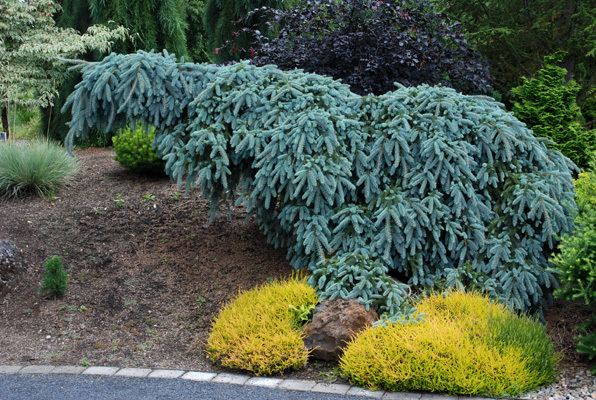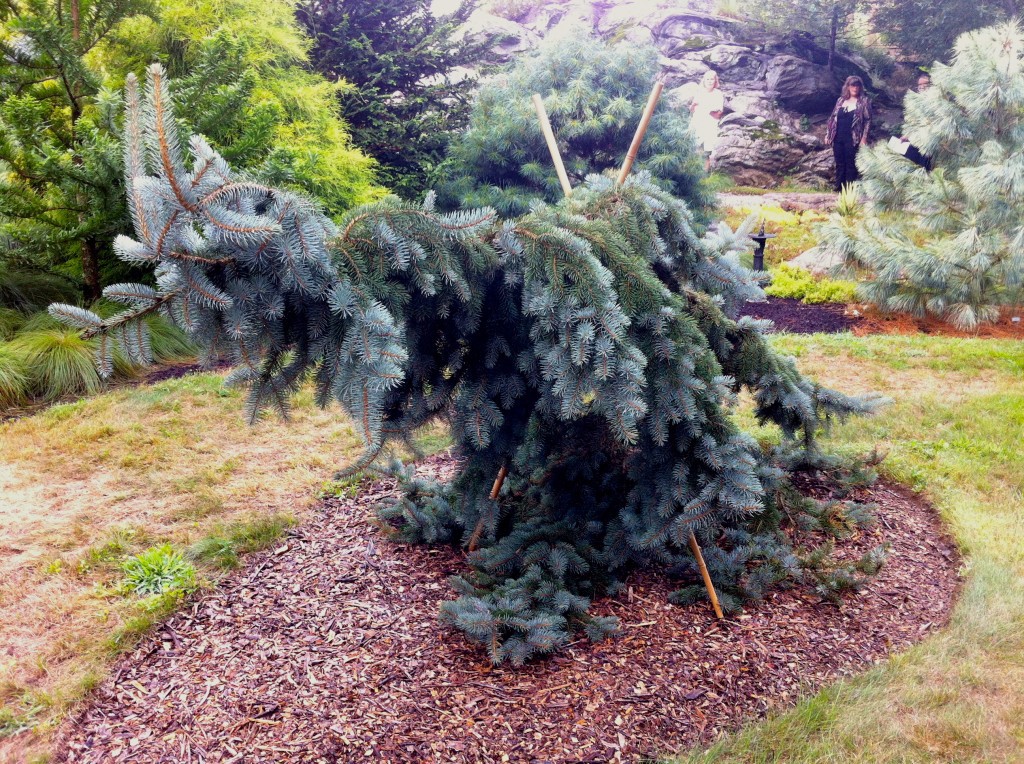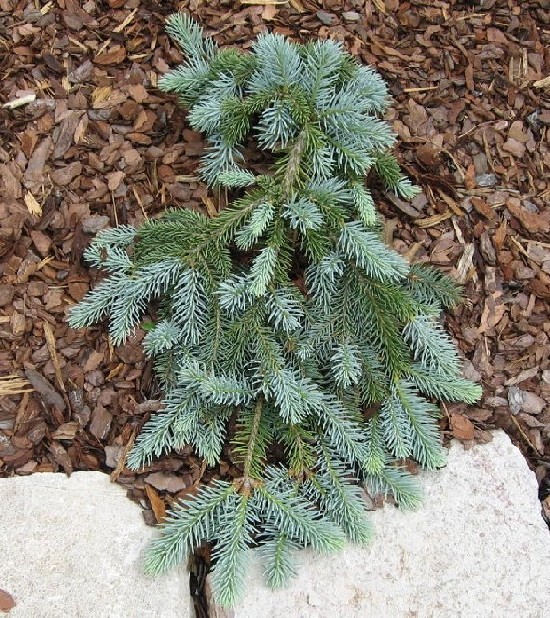Picea pungens 'The Blues' is a strongly weeping selection of Colorado spruce with drooping branches and branchlets. Imagine a weeping Norway spruce but with larger, bright-blue needles and you'll begin to develop an idea of this plant's potential in the landscape. 'The Blues' has to be staked to desired height, then allowed to ramble, eventually becoming horizontal with all branches cascading downward. A relatively fast-growing plant, 'The Blues' will increase at a rate of about 1 foot (30 cm) at the terminal leader every year.
This cultivar originated 1982 as a side sport on P. pungens 'Glauca Pendula' found by Larry Stanley of Stanley & Sons Nursery, Boring Oregon. It was one of two plants selected in 2008 for the ACS Collectors Conifer of the Year Program.


